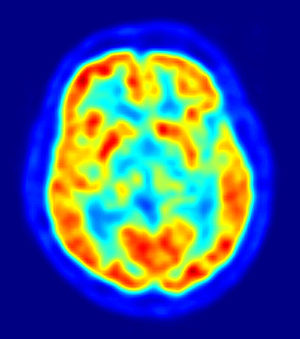International Mastermind Association Interview
Is Hypnosis real? How does it work?
Play the Podcast:
Hypnosis and the Brain
Danelle: What happens in the BRAIN during hypnosis?
Erick: Well, let’s talk about how the brain is usually, I guess, measured from a scientific standpoint at least currently. Brain activity is measured in terms of brainwave classifications. And you might have heard this before, there’s four basic brainwave classifications that are generally accepted.
Four Brainwave Phases
- Beta: This is where we’re at right now. Normal working consciousness, wide awake and aware, conversational.
- Alpha: This would be if you’re just staying at home, relaxing, listening to music, or meditating.
- Theta: This is the working trance state of hypnosis. It’s a naturally occurring state of mind. You go through this phase when you fall asleep and when you awaken it’s part of your natural sleep cycle to go in and out of hypnosis. And this is our working state of hypnosis where we’re working with therapy or we’re working in stage shows for entertainment. And even where you’re hoping to get yourself in some respects with your auto-suggestion.
- Delta: Deep sleep. So when your brain finally goes to deep sleep. In other words, the hypnotic state is not the same thing as sleep. When you’re going to that delta state, that’s deep sleep. Your mind is off doing other things.
So we can measure these different cycles. And when we’re in hypnosis, you might have heard, many people can experience auditory and visual hallucinations.
For example, daydreaming is a trance state. So you could be sitting there. If you’re kind of sleep deprived or hung over or whatever, you very easily daydream that you’re off somewhere else, especially if you’re maybe sitting in a boring classroom experience or something. So that is an example of a natural trance state that could just occur. We take it for granted.
We are going in and out of this type of trance state all the time and we just go, “Oh, it’s just a daydream.” No. That is deep-level hypnosis for you to experience that phenomenon. So people think it’s so far out when you’re working with them using hypnosis, but you’re going in and out of hypnosis, you’re going in and out of these natural trance states all the time.
Positron Emission Tomography (PET)
Note: Is hypnosis real? For a long time it’s been placed in the category of myths and legend because we didn’t have the technology to measure the phenomenon. However, we’re now in a position to isolate and measure the hypnotic state. This is opening many doorways to further understanding.
So, you know another thing that’s kind of interesting from a scientific perspective that’s maybe a little bit more recent is okay, so we’re experiencing in the trance states, we can experience for example auditory and visual hallucinations. And for that reason, people might just conclude that hypnosis is just highly focused imagination, that’s all it is.
Well, now they have a way of measuring actual brain images, blood flow, electronic activity with – this is over my head – but it’s called positron emission tomography (PET). So this is where we can measure brain activity.
So they conducted some experiments, and what they found is that when somebody has an auditory hallucination, for example, in the trance state, it’s actually experienced from the same part of the brain as if it were something they were really hearing.
So basically, a hallucination you experience in the HYPNOTIC STATE, the brain considers it the SAME as if it were actually being received from an outside source.
And if you were just to IMAGINE hearing something (in the normal waking state), it would go to a completely DIFFERENT part of the brain.
So now we’re getting a little bit of, in a roundabout way, some scientific proof for one of the cardinal principles of hypnosis, and maybe one of the cardinal principles that is maybe not exactly stated, but it is one of the principles of Napoleon Hill’s works is that the subconscious mind does not make a distinction between what’s real and what is imagined.
Danelle: Can you say that again because that was going to be my question? Can you repeat that please?
Is Hypnosis Real? Imagination vs Reality
Erick: Sure. This is a biggie. You can go all over the place with this when you use it and run with it in your personal development, but it’s a very important thing to know is that the subconscious mind does not distinguish between real and imagined.
So let me clarify that because that sounds maybe a bit vague. What does that mean? So let me give you an example. If you are at a movie and it’s a cliffhanger, and it’s exciting, and your palms are sweaty, that means you’re very emotionally engaged with this movie. True?
Danelle: Yes.
Erick: But at a certain level consciously, you realize you’re just sitting in the theater, you’re just watching some movie on a screen. Why are you so emotionally engaged? Because the subconscious mind is seeing what’s on the screen and it is giving you the appropriate emotional responses for what’s going up on that screen. It’s not treating it differently because it’s “fake.” You know what I’m saying?
Let’s take it to the next level. Let’s say you get in a fight with your boss at work. And he said something to you or she said something to you. You are so mad you go home and you’re by yourself, and then you think about what your boss said to you. What happens? You get angry, don’t you?
Danelle: Right.
Erick: You get angry, and your boss isn’t in the room. There’s nobody around there. You’re just getting angry thinking about things now. Why? Because when you imagine yourself in the situation, you’re already emotionally linked up to be angry with that situation and your subconscious mind immediately produces the appropriate response just based on your thoughts and imagination.
Your boss doesn’t have to be right there yelling in your face. All you have to do is think about it, and if you’re linked up for that, BOOM, you get the response
This is what happens is many people. We’re kind of going through life already linked up with a lot of patterns and responses that are automatic for us, and they are going to be automatic because with the subconscious mind, you don’t have to think about what’s going to happen. It basically has all these responsibilities that are all on AUTOPILOT. They’re all going to happen.
So to use this to our advantage, what we have to do is consciously use and engage our imagination towards the things we want to achieve, because if we condition our mind with where we do want to go with our lives, and what we do want to achieve, and we immerse our imagination in those things, the subconscious mind DOESN’T treat that as “fake.”
The subconscious mind is going, “Oh, this is what you want? Let me work on this and find out how to make this a reality,” because it is your faithful servant. It DOES follow direction.
Negative Self Hypnosis
The subconscious mind will do what you want it to, however most people don’t give it any direction at all. They basically go through life reacting to circumstances. They’re basically going through life just responding to things thinking that they’re in control, thinking that they’re making decisions, but all they’re doing is REACTING to things.
One of the key points that Napoleon Hill makes, and what I think is very true in some respects, is that if you interviewed 100 people and asked exactly what they want, 98% of them, 98 out of 100 won’t be able to tell you what they want.
Danelle: Or they’ll tell you what they DON’T want.
Erick: Oh, yeah. That’s even worse. So here’s an example. Here’s why that is a disaster to think about what you DON’T want. So if I say to you, “Don’t think of a pink elephant right now.”
Boom! That’s all you get in your mind’s eye, a pink elephant. Guess what? The subconscious mind doesn’t bother to process NEGATIVES. So this cultural focus that we have of focusing on what we DON’T want, guess what you’re doing? You’re self-hypnotizing, you’re self-constricting yourself to focus and immerse your imagination in all the things you DON’T want.
Your subconscious mind goes, “Yep, we can do that. Let me give you some more. Here it comes.” And it’s so easy to see once you’re aware of this.

So for example, I used to do quite a bit of work with weight-loss clients. I might ask a new weight loss client, “Okay, what is this that you want? What do you want to get out of these sessions? What do you want to achieve?”
And they’ll just be like, “Well, I want to be not fat.” So, what’s the self-suggestion? “I’m fat.” It’s like, what’s the suggestion to yourself in the break room? “I’m NOT going to eat that doughnut.” And actually what you’re focused on is, “Doughnut, doughnut, doughnut.” And eventually it’s all you’re thinking about.
You’ve got to be clear. I mean, we all know the power of a definite goal and definite purpose, so being “not fat” is vague and it’s phrased in the negative. It’s worthless.
Self Suggestion with INTENTION
A positive goal for example is, “Hey, I want to weigh 165 pounds and have a 32-inch waist. I’m going to have this achieved for myself by September 1st.” Boom! That was super clear.
We have to actually create a picture or something, some sort of reference in our mind to be able to even make a statement like that. And now we’ve got something we can continue to focus on, and that is going to lead our subconscious mind to do whatever work that needs to happen in the background for that to happen.
If you continue to immerse your imagination on that specific of a goal and you keep on going back to it, your subconscious mind will have no choice but to make the arrangements for that to happen.
Next Article: What Do You Desire?



Leave a Reply